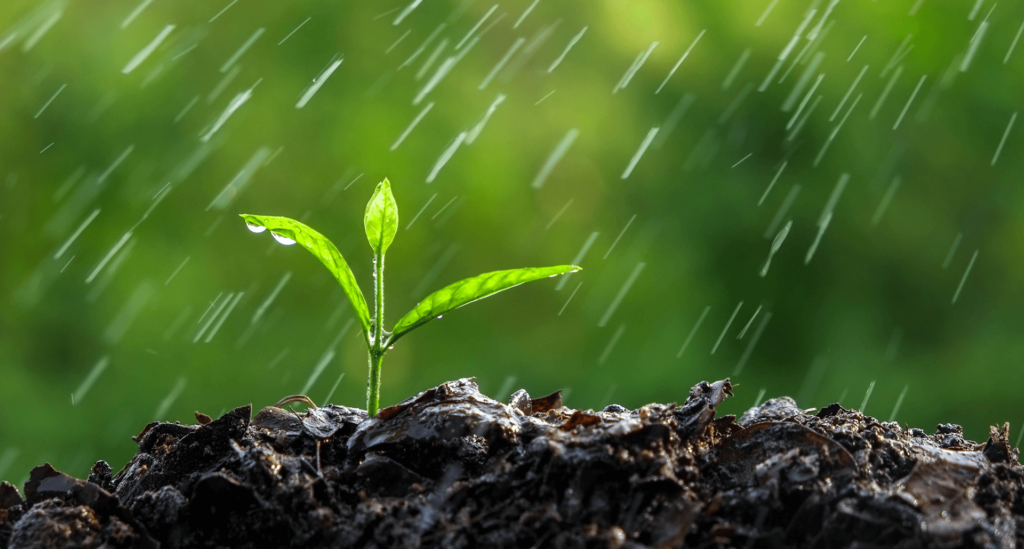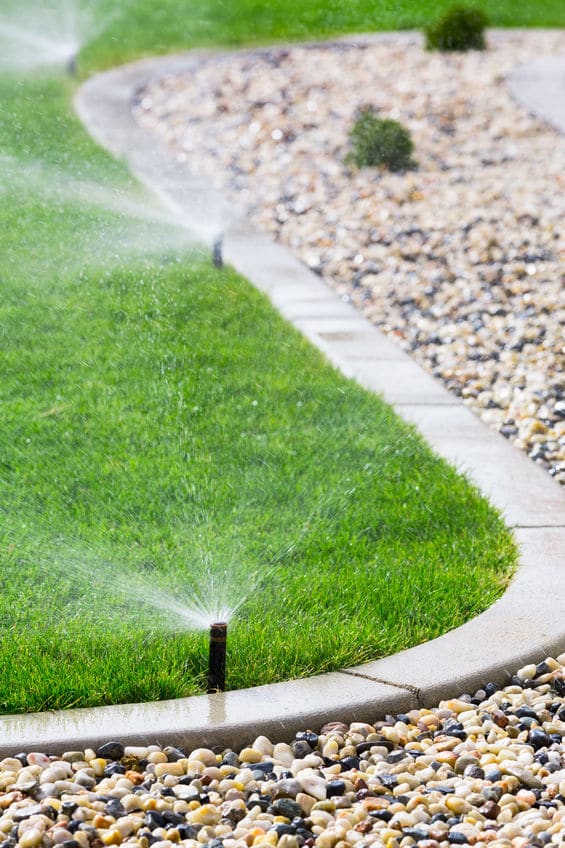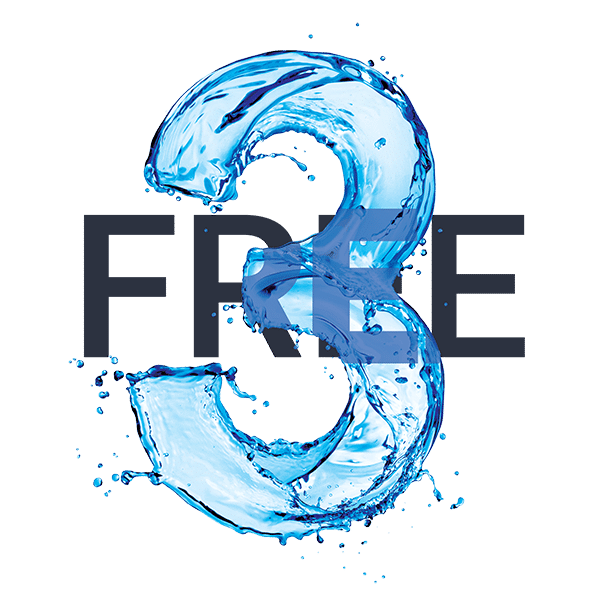Here are innovative irrigation methods and strategies for your landscape in 2024. We all want to have a green lawn but do we really know how much water is needed? It is easy to find ourselves overwatering. In fact, it has been shown that we waste about 50% of water that is used on landscape and this is mostly due to overwatering. But to start, let's talk about what irrigation is.
What is Irrigation?
Irrigation is simply the process of applying water to land for the purpose of growing and sustaining plant life. There are various methods of irrigation, such as surface irrigation, sprinkler irrigation, and drip irrigation. While each method has its own benefits and drawbacks, drip irrigation stands out for its efficiency and cost-effectiveness. Here's some of the more popular irrigation methods and strategies for 2024:
ET Irrigation
What is ET? ET stands for evapotranspiration and is the loss of water by evaporation from the soil and transpiration from plants and is a popular metric to use for irrigation methods in 2024. The main factors that affect the rate of evapotranspiration are temperature, wind, and soil moisture.
Most everyone knows what evaporation is but transpiration might be a new term for you. It is the loss of water from the plant and is mainly through the stomata of the leaves. When we have this information we can know how much water to supplement with our irrigation systems.
How do we use ET to determine the amount of water our plants need? First, we start with a reference ET, or ETo. Then we multiply this reference ET by our landscape coefficient (KL), also known as the crop coefficient (KC) or plant factor (PF).
ETo x KL = Plant water need
For example, in Utah on a summer day the ETo might be .3 and the typical KL for turfgrass is .7, giving us a Plant Water Need of .21 inches
Optimal water scheduling
To determine the optimal watering schedule, we need to look at our ET, precipitation rate of the sprinkler heads, and also take in to account conditions such as soil type and how sunny or shaded a particular zone is. The precipitation rate of each head can be found in product manuals provided by the manufacturer.
You may have a zone of Rain Bird 3500 rotors with blue nozzles that have a precipitation rate of 0.53 inches per hour. If we find our plant water requirement to be .42 we can do some simple math to find out how long that zone should run.
In order to apply .42 inches of water this zone would need to run for 47 minutes. Discovering this for each zone will make sure we are watering the correct amount and ensure proper irrigation watering.
Proper Irrigation Upgrades
Another important factor is to make upgrades to the system improving its efficiency. Some upgrades include matched precipitation rates, pressure regulating heads, and rain sensors. Getting matched precipitation rate is done by being consistent with types of heads and nozzles within a zone.
This will improve your distribution uniformity. The higher the distribution uniformity, the more efficient the zone is. Distribution uniformity can be found by doing a cup test. For more help, try Smart Rain for your commercial irrigation. Proper irrigation with Smart Rain can help gain you tax rebates and you could save 30-50% on your bill.
Drip Irrigation
Drip irrigation works by delivering water directly to the roots of plants through a network of tubes and emitters. This method eliminates water waste since it targets specific areas instead of drenching the entire landscape. It also minimizes evaporation, which is a significant factor in traditional irrigation methods. And the best part? It can save you up to 50% on your commercial property's water consumption, leading to significant cost savings over time.
Aside from being efficient and cost-effective, drip irrigation offers many other benefits that make it a commercial property owner's best friend. Here are some top reasons why:
- Customizable: Drip irrigation systems can be tailored to fit any landscape, regardless of shape or size. This means that every plant in your commercial property can receive the right amount of water it needs.
- Low Maintenance: Once installed, drip irrigation requires minimal maintenance compared to other forms of irrigation. This saves you time and money on labor costs.
- Healthier Plants: Drip irrigation delivers water directly to the roots, resulting in healthier and stronger plants. This is because water reaches deeper into the soil, encouraging deep root growth.
- Weed Control: By targeting specific areas, drip irrigation reduces weed growth since weeds are less likely to receive water.
Localized Irrigation
So what exactly is localized irrigation? It is a type of irrigation that delivers water directly to the root zone of plants, hence the term "localized". This method is different from traditional irrigation methods, where water is sprayed over a large area or field. Localized irrigation systems use pipes or tubes with small openings placed near the plant's roots, allowing for precise delivery of water.
Now that you know what localized irrigation is, let's talk about why it's beneficial. First and foremost, localized irrigation is highly efficient as it delivers water directly to where it's needed the most - the roots of plants. This not only reduces water waste, but also helps in conserving water. It also minimizes weed growth as water is not sprayed over a large area, reducing the chances of weeds germinating.
In addition, localized irrigation systems are great for plants that require specific watering schedules or amounts. With traditional irrigation methods, it can be difficult to control the amount of water being delivered to each plant. However, with localized irrigation, you have more control and can customize the watering schedule and amount according to the needs of each plant.
Subsurface irrigation
Subsurface irrigation, also known as subsurface drip irrigation (SDI), is a low-impact and efficient method of delivering water directly to the root zone of plants. This is done through a series of underground tubes or pipes that distribute water throughout the soil. Unlike traditional sprinkler systems, which spray water over large areas, subsurface irrigation targets specific areas where plants need it most.
So why should you consider using subsurface irrigation on your commercial property? Well, for one, it can help save water. By delivering water directly to the root zone, there is less water evaporation and runoff compared to traditional surface irrigation methods. This means more efficient use of resources and potentially lower water bills.
But that's not the only benefit of subsurface irrigation. It also promotes healthier plant growth. By delivering water directly to the roots, plants are less likely to suffer from drought stress or disease. Plus, with no above-ground sprinkler heads, there is less chance of damage to plants and landscape features.
Surface irrigation
Surface irrigation is a method of watering plants by flowing water over the surface of the soil. It involves creating basins or furrows in the soil and filling them with water, allowing it to seep into the ground and reach the plant roots.
This method is commonly used in large fields or agricultural areas, as it can cover a large area with minimal equipment and labor. However, it may not be the most suitable option for commercial properties due to its potential for water wastage and uneven distribution of water.
When deciding whether to use surface or subsurface irrigation for your commercial property, there are a few factors to consider. The type of soil, plant types, and water availability are essential in determining the most suitable method.
Conclusion
With these popular irrigation methods, it's important you investigate which one is right for you. Several technologies can help you stay on the forefront of irrigation. Read more about the technologies Smart Rain offers for your irrigation system.




